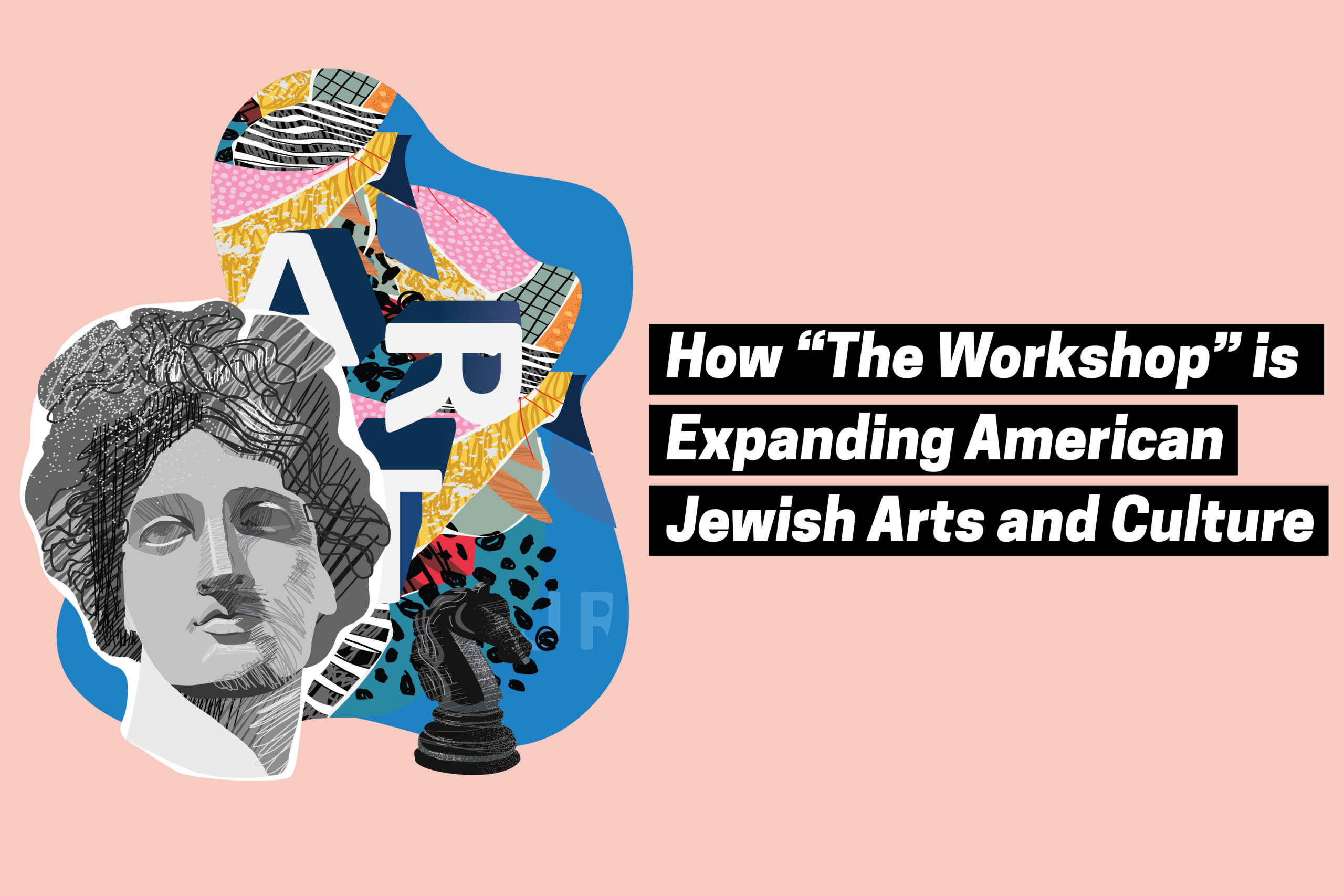
In the early months of the pandemic, rabbinical student Kendell Pinkney was writing. No, it wasn’t a D’var Torah or an essay for his coursework. Instead, as an artist who studied theater writing at NYU Tisch, Pinkney formed a two-person writing group with fellow JoC artist Rebecca S’manga Frank, who is trained in acting. The two of them knew that the work they were creating in community with one another was just the starting point.
“We had just gotten to this point of asking ourselves, ‘okay, what are we going to do?’,” Pinkney explained. “As the pandemic got deeper, we realized we really needed to continue writing.” Bringing more artists into the fold, Pinkney, S’manga Frank, and composer and writer Avi Amon “started kicking around ideas” of ways they could collaborate as JoC artists.
“We started thinking, wouldn’t it be great if there was a program that foregrounded the creative work of Jews who happen to be Jews of Color, Jews with indigenous backgrounds, Jews who are Sephardi or Mizrahi?” (often shortened to the acronym JOCISM). “We started dreaming about what that might be.”
Behind the scenes, Pinkney was doing more than dreaming. He held over one hundred conversations with people around the country as well as in Canada, many of whom are “artists who inhabit both identities” of Jewish and Person of Color. Pinkney began to see a deep interest emerging from his networks: interest for a space where JOCISM artists could create on their own terms.
To bring their idea into the real world, Pinkney sought out conversations with various organizations, among them Jewish Theological Seminary (JTS) where Pinkney is a rabbinical student.
“JTS was the place that ‘won out’ in being our partner. It could provide faculty and research support, space to create art as we wanted, and there was a new arts and culture space that was just created at JTS and there weren’t yet plans for how it would be used.” Pinkney saw how his interest in creating an artist’s space could align with JTS’s interest in transforming their arts and culture center into a relevant and vibrant hub of JOCISM creativity.
“As a JTS student I knew there was a need to fill that space and make it relevant to the community.” Pinkney was able to secure support from JTS, which, he said, “put its resources where its values are.” JTS provided the initial seed funding that would provide all participants with a respectable artist’s stipend.
From the start, Pinkney worked to ensure an equitable and authentic relationship between the institution and the artists. One way is by making sure they aren’t pigeonholed into creating specific forms of art or providing certain forms of engagement for the community, such as leading services. Though Pinkney is certainly skilled at leading services, he does not want the institution to dictate how the artists in the collective serve the community. He sees the need to value their creative works in their own right.
“We’re not leaning into kitsch, we’re not producing Purim spiels, though Purim spiels are lovely…We’re trying to create the infrastructure for artists who are Jews of Color, Indigenous, Sephardi, Mizrahi, to be able to be part of a broader community dialogue, as opposed to one institution holding them and saying ‘look at us doing this fun thing with Jews of Color’ in a way that feels really exotifying. But when it feels like many communities coming together and choosing to contribute something really specific that they’re good at, then suddenly I think we’re doing something different.”
Pinkney, who feels his identity as an artist-rabbi is really starting to take root, has dubbed this innovative artist’s collective “The Workshop.” With a small group of fellows, The Workshop is intended to serve as an intimate community of creators and collaborators.
“The biggest way we change hearts and minds—or nudge them at least—is actually through broader media.” Pinkney reminded us that Daveed Diggs’ “Puppy for Hanukkah” “did more for bringing about awareness of JoC existence than a lot of other things. It was fun, it was subtle and not about drawing attention to itself or standing on a soapbox.” The authentic wholeness of self that Pinkney witnessed in the response to the music video pushed him to see all art and media forms as a chance to transform.
“I want to see more examples in media, on stages, both commercial and non-commercial, of JOCISM folks being able to take up their full identities and tell their stories.” Though Pinkney doesn’t want to force the artists to create works that are about their identities, he believes that the work that will emerge will diversify who we think of as a Jew.
“I do hope that one of the things that comes out of this is that JOCISM communities will be deeply moved by what these artists create; in certain cases, they might feel so seen by a play by Rebecca S’manga Frank, or the music of Avi Amon with a Turkish Sephardic feel to it. I hope people feel seen, heard, or represented in some way.”
Pinkney believes that The Workshop will be an exploration into the relationship of Jewish arts and culture to the Jewish community and to communities outside of it.
“Valuing what artists give to Jewish communities is so essential for the long-term health of Jewish life. In recognizing that, we shouldn’t try to turn them into our image of what Jewishness should look like. No, let artists be artists and I can tell you they will take us to a much more interesting, vibrant kind of Judaism than we can even imagine, and one that will have intersections with and relevance to the rest of the world.”
Learn more about The Workshop and their fellows here.


